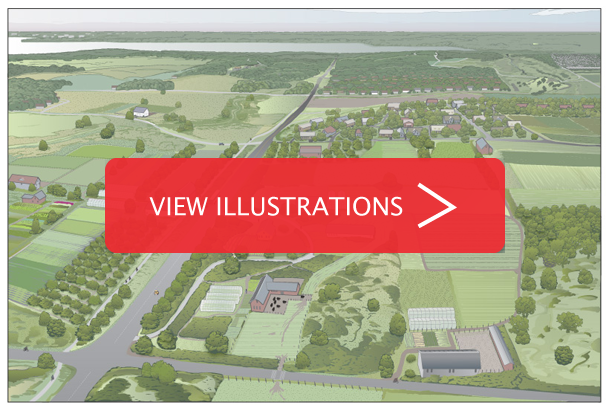

“When I was your age, this merganser would have had trouble finding a place to nest on Lake Monona,” whispered Rosa to Emilia, as they watched a female hooded merganser leading her troop of chicks along the shoreline. Emilia took her eyes off the birds for a moment to give her grandmother a wordless impressed expression. Twelve-year-old Emilia adores her grandmother. Even as her adolescent annoyance for her parents emerges, Emilia keeps Rosa on a pedestal.
When Rosa was Emilia’s age, in 2013, the Yahara Watershed was quite different. The restored marsh, where the mergansers reside, is but one indicator of the ways things have changed. In fact, indicators lay scattered throughout the watershed—in its lakes, its neighborhoods, its cityscapes, and its landscapes. But what underlies these visible changes is something invisible, and it is the real change that unfolded.
Rosa reflected on this as she watched her granddaughter scribble notes in her journal. Emilia journals avidly about her experiences in nature, usually recording observations and musings about birds. Her affinity for birds has earned her the term of endearment “my bird” from her grandmother. To Rosa, Emilia’s connection with birds is another manifestation of the intangible changes whose unraveling she has witnessed over the course of her life. These intangibles, which have reaped tangible outcomes, used to belong to a more peripheral worldview. But over the decades since Rosa’s youth, they have ventured from the edge and spread across the cultural landscape, eventually catalyzing the Great Transition.
In her granddaughter, Rosa sees the reflection of her own youth. Back then, she possessed a sense of kinship with nature that not everyone seemed to share. She used to grapple with how to make more people feel connected with the natural world, a connection that, to her, seemed so plain. What she learned, however, is that changing people is no plain and simple feat.
The sun was rising higher, so Rosa and Emilia paddled onward toward home. Abutting the marsh is Bastian’s Beach, where Rosa spotted and waved to the Meiers, who sat reading with the beach to themselves. The elderly couple frequents this beach on early mornings, even when the air is chilly, like on this particular April morning. Many years ago, the marsh and beach had been the neatly mowed turf of people’s backyards. Now, reeds and trees obstruct the view of the lakefront houses. The conversion is a product of the Transition, and of the efforts of a coalition led by Rosa’s husband, Sebastian. Monona had passed citywide legislation to restore natural shorelines around the lake to reduce urban runoff and the risk of flooding, as well as to create more wildlife habitat. In recognizing their connection with wildlife, residents understood that harmonious cohabitation meant being sensitive to each other’s needs and, sometimes, giving each other space.
“Grandma, tell me again why this beach is named after Grandpa,” inquired Emilia, snapping Rosa out of her reflective trance. Rosa paused for a moment before reciting the story she has told Emilia many times before. Emilia loves hearing the story, but the storytelling is bittersweet to Rosa. While it allows her to relive the excitement of the Great Transition’s beginnings, it also reminds her of how much she misses Sebastian, who died last year. The commemoration of the beach in his nickname was a huge, well-deserved honor. With a deep, centering sigh, Rosa began.
To continue reading, download the PDF.






